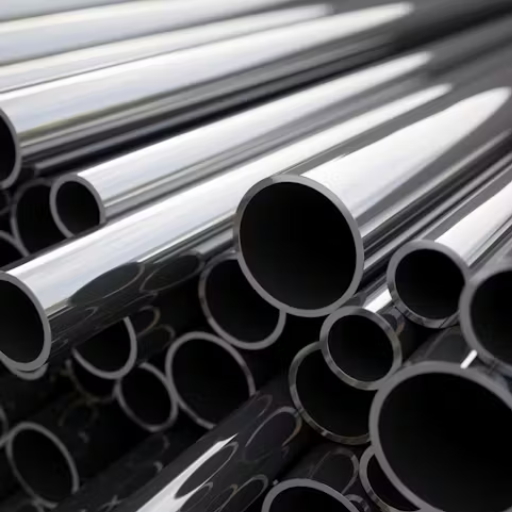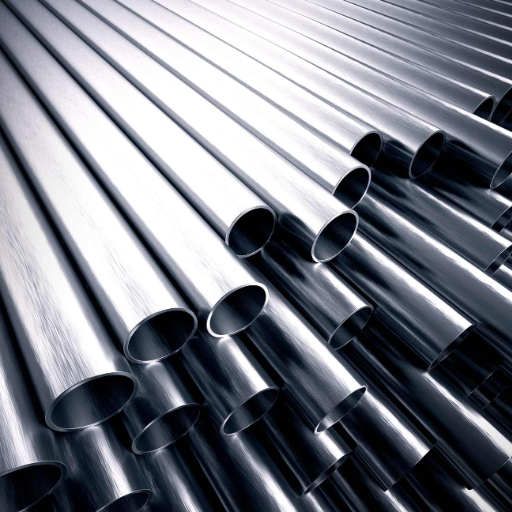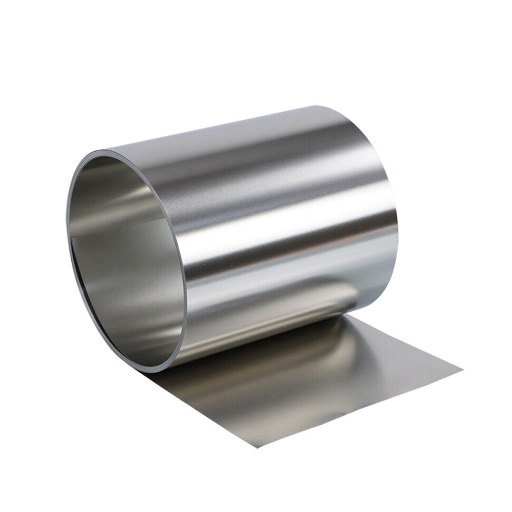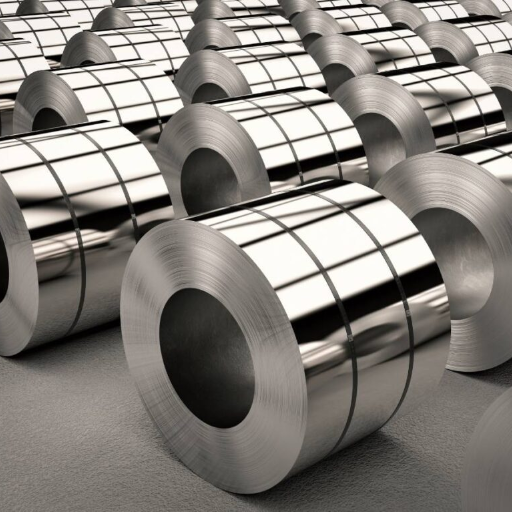Materials are shaped by a myriad of electric forces, one of those being magnetism. Among those intriguing properties, materials like cobalt, iron, and Nickel are known to possess high amounts of magnetism. Surprisingly, gother metals like copper have a incredidly paradoxical relationship with magnetism. This blog post aims to explore the science behind the different magnetic behaviors exhibited by metals like copper and whether they exhibit weak magnetism.
As described earlier, we will first provide an authentic scientific definition of magnetism, post which we will delve right into the summary containing the different classifications of magnetic materials: ferromagnetic, paramagnetic, and finally diamagnetic. The next part of the story will look into the net structure and the arrangement of electrons in the copper atom which explains why copper is a weak diaagnetic material. Lastly, we will touch on the more practical and useful areas where copper is used when its magnetic properties (or lack of them) are especially needed, such as in high technology and electrical engineering. We hope that by publicly posting this article, readers will start developing a deeper comprehension of the structure of metals and the reasons for the different behaviors of copper in a magnetic field.
Why is copper not magnetic?

Magnetism isn’t a property that describes copper, as the metal does not have unpaired electrons in its atomic structure configuration. Coupled electrons within the orbitals of copper mean there is no overall magnetic moment. Furthermore, the crystal structure of copper does not allow for the requisite collective electron ordering for ferromagnetism or paramagnetism to occur. All these factors mean that copper only shows slight negative diamagnetic effects, which repels or suppresses the applied magnetic field.
Understanding the magnetic properties of copper
The magnetic aspects of copper are determined largely by its atomic structure and the arrangement of electrons in the atoms. Copper is a diamagnetic substance, which means that it does not have any unpaired electrons in its outer orbitals and therefore does not have a permanent magnetic moment. Rather, copper produces a faint opposing magnetic moment when exposed to an external magnetic field which enables a form of weak repulsion. This is the case because, in diamagnetic substances, the paired electrons that are in motion will have their motion slightly disturbed by the external magnetic field, thus generating weak opposition.
Moreover, the lattice structure of copper together with its high conductivity restricts copper from exhibiting magnetic behavior characteristic of ferromagnetic substances such as iron, cobalt, or nickel. Unlike these materials, copper cannot construct a compatible magnetic domain due to the absence of spin alignment. This makes copper ideal for nonmagnetic conductive materials, particularly in wires used in electronic and electromagnetic devices. This reveals how deeply copper’s magnetism differs from those of other metals.
How Copper is Classified Among Metals
Copper is found in group eleven of the periodic table alongside silver and gold, and is known as a transition metal. Its position is primarily defined by its atomic structure which has an incomplete d-electron subshell, along with one or more oxidation states. All transition metals, including copper, have very high conductivity, along with a high degree of malleability and ductility.
In terms of reactivity, copper is far less reactive than alkali metals, but also highly more reactive than noble gases. In cuprous and cupric states, copper is capable of forming stable oxidation states which showcase its +1 or +2 specialty. With such properties, copper is different from most metals, and makes it ideal for use in electric wiring, plumbing, and the production of alloys.
Moreover, copper is also of great importance due to its exceptional conductive properties. As one of, if not the most conductive metals regarding both heat and electricity, copper stands out amongst most other transition metals in practical application. Coupled with its non-magnetic feature, it places it in a niche category suitable for high-performance electric systems. This is why copper is considered a functional and high-utility metal.
Why copper is not attracted to magnets like iron
Similar to Silver, Copper is diamagnetic which makes it resistant to magnetic appeal. The electrons of copper exist in pairs which results in the net magnetic moment being equal to zero. On the contrary, ferromagnetic materials such as iron contain unrivaled electrons which during magnetization, produce an intense attractive magnetic field. When subjected to a magnet copper, produces a weak magnetic field that opposes the attraction rather than strengthens it. The crystal lattice of copper also does not promote the alignment of magnetic domains, which is essential for strong magnetic appeal. So, the relationship copper has with magnets is incomparable to ferromagnetic materials.
How does copper interact with a magnetic field?

The behavior of copper in a magnetic field is representative of diamagnetic materials. When an external magnetic field is applied, copper wires give rise to a magnetic field that is very weak and points in the opposite direction. Thus, there is very weak repulsion. This happens because there is the motion of electrons in copper, which generate small induced currents that oppose the applied magnetic field. The interaction is very weak, and completely imperceptible under standard conditions, which makes copper different from other materials possessing large degrees of magnetism response like ferromagnetic metals iron.
The role of external magnetic fields on copper
Copper is diamagnetic, meaning that it repels an external magnetic field, but weakly. This is due to the induced electric currents caused by the motion of electrons inside copper. These currents form an opposing magnetic field which explains the weak repulsion of copper. Unlike iron and other ferromagnetic materials, copper does not form permanent magnetic domains or show appreciable magnetization. As a result, the impact of external magnetic fields is weak and can only be recorded with sophisticated equipment usually found in scientific laboratories or industry for electromagnetic damping, inductive heating, or eddy current testing.
Exploring the Magnetic Behavior of Copper in Changing Magnetic Fields
Due to copper’s low retention of magnetization, its responses to external, changing magnetic fields will only result in weak, passive, and non-relenting diomagnetism. Being a good conductor, copper’s response to external magnetic fields will induce eddy currents that follow Faraday’s Law of Induction. The eddy currents produce opposing localized magnetic fields, and superpose themselves against the imposed field, thus providing resistance to changes in the external field. Ferromagnetic materials do develop magnetic domains, and suffer hysteresis, but this is not the copper case. This property makes copper suitable for use in devices and instruments that are extremely sensitive and where constant non-magnetic characteristics will remain undisturbed, like in electromagnetic shields and damping devices.
What happens when a magnet moves near copper?
Under the principles of Faraday’s law of electromagnetic induction, when a magnet approaches copper, eddy currents are created within the copper. These eddy currents generate opposing magnetic fields which, by Lenz’s Law, resist the movement of the magnet. The resistance generated dampens the speed of the object and is commonly referred to as eddy current braking. While copper does not become magnetized, the induced currents from the magnet impart a repulsive force that impedes the speed of the magnet. This principle is applied extensively in electromagnets, contactless metal sensors, and magnetic braking systems.
Can copper create a magnetic field?

Being a non-magnetic material, copper does not provide for the self-generation of a magnetic field. However, when electric current circulates in copper, it produces a magnetic field around the conductor by Ampère’s Law. The magnetic field generated around the conductor is not a result of any magnetic property of copper, but quite the opposite. The copper conductor possesses no magnetism; rather, it is due to the current flowing through the copper that the conductor is magnetized. This effect is crucial for the functioning of electromagnets, inductors, and transformers. For this purpose copper is always chosen; it is the best conductive material.
How copper wire generates a magnetic field
The copper wire produces a magnetic field around itself by following the basic concepts of Biot-Savart Law and Ampere’s Law when electrical current is passed through it. This field has several loops around the conductor’s surface and each loop has a magnetic field in the direction of the current. Its intensity is proportional to the current flowing through the wire as well as its shape: for example, winding the wire into a coil increases the field in the center of the coil producing a strong uniform field. Copper is used in such fields because of its conductive properties which allow for sufficient energy flow with little to no energy waste. Such mechanisms are important in the operation of motors, generators, inductors, etc.
The process of magnetic fields through electromagnetic induction
Electromagnetic induction happens when an electric current is developed in a conductor as a result of magnetic flux change. This depends on the two components – the position of the conductor and the strength of the magnetic field. The magnitude of an induced EMF depends on how quickly the surface’s magnetic flux is changing as well. Induction can take place by degrees in which a magnetic field is varied or a conductor which can induce a current in a specific area like copper wires is moved. When a copper wire is placed inside a changing magnetic field, an induced current is developed due to the relative motion between the magnetic field and the wire. This is the fundamental principle that makes electric generators, transformers, and even induction cooktops functional. These materials are far more efficient than others in induction precisely because less power is wasted in heat due to the best conductivity of copper.
Is it possible to make copper magnetic?
The reason why copper is not magnetically charged, to begin with, is because its electronic configuration does not contain the requisite unpaired electrons that would facilitate strong magnetic properties. However, copper is capable of exhibiting some weak magnetic behavior under exceptional circumstances. This includes exposing copper to a very strong magnetic field or through certain wrought alloys, which allows the material to become paramagnetic; this means that copper experiences weak magnetic forces for some time, after which it ceases to react to a magnetic field. Furthermore, some evidence suggests that it is possible to structure copper physically or chemically at a nanoscopic scale in a way that would elicit some degree of magnetic response. In as much as these avenues exist, at room temperature, copper is still fundamentally non-magnetic and is mainly appreciated for its great conductivity of electricity and heat, instead of for its weak magnetic features.
What are the magnetic properties of copper alloys?

All copper alloys possess weak magnetic properties because of copper’s dominating non-magnetic feature. However, the infusion of particular alloying elements, such as iron, nickel, or cobalt can give these alloys paramagnetic, or even ferromagnetic, properties. For example, certain copper-iron and copper-nickel alloys demonstrate increased responses to magnets under specific conditions. The magnetic properties of these alloys are influenced by their chemical composition, the processes they undergo, and the arrangement of their structures which can form local magnetic domains. Still, these alterations do not change the fact that the magnetic characteristics of copper alloys are more pronounced compared to those of pure iron or cobalt, but weaker than strongly magnetic materials.
How copper alloys differ in magnetic behavior
The differences in the magnetic behavior of copper alloys concerning temperature dependency are mainly wrought by the alloy’s structural and compositional differences. As known, pure copper has a negligible magnetic response and it is classified as diamagnetic, meaning that it has a very weak rejuvenation towards magnetic fields. Nevertheless, when alloyed with such elements as iron, nickel, or cobalt, it is predicted that the resulting material may become paramagnetic or ferromagnetic depending on the concentration and the allocation of these elements within the substance. For example, a few copper-nickel alloys have some weak response to magnetism which is attributed to the nickel content. However, depending on the concentration of copper-iron alloys, some get localized regions within them where they exhibit ferromagnetic properties. Moreover, it is well known that altering the heat treatment of the alloys combined with other methods of working can change the position of the magnetic domains and therefore the magneticness of the alloy. Nonetheless, there is no doubt that all these alloys are generally less magnetic than traditional ferrite materials such as iron and steel.
The Impact of Different Elements on Copper Alloys’ Magnetism
The magnetic characteristics of copper alloys are determined primarily by the nature and quantity of elements added to copper. Nickel and cobalt, for example, possess strong magnetic properties that exhibit paramagnetism or ferromagnetism in copper alloys. Copper-nickel mixtures, for example, are well known to be paramagnetic at elevated temperatures and higher nickel concentrations. Cobalt in lower concentration is also known to increase magnetism but tends towards a ferromagnetic response with increasing concentration.
In contrast to this, iron, in the presence of copper, can create the possibility of magnetically ordering regions depending on the iron concentration and the particular alloy structural phase. Iron and cobalt are some of the preferred magnetic materials but at lower concentrations of these elements, the magnetism is very much localized. On the other hand, non-magnetic elements like zinc or tin, although giving rise to a slight increase in diatropic behavior, do not assist in the alignment of magnetic domains and so are said to be diatropic. Processing techniques such as annealing or severe plastic deformation also contribute to where the crystallographic grain structure is affected by the magnetic domain in the alloy. This, it can be concluded, is why the magnetism of copper alloys depends on their composition, heat treatments, and mostly their microstructure.
What happens in the presence of a strong magnetic field?

The response of a copper alloy to a strong magnetic field depends on the composition and microstructure of the material’s magnetic domains. For alloys with ferromagnetic iron or cobalt, there is sufficient external alignment of the magnetic moments that leads to an increase in magnetization. This is especially true if the alloy was previously processed using annealing which alters grain structure resulting in improved domain alignment. Conversely, alloys dominated by non-magnetic elements interact poorly with the magnetic field as diatopic behavior is a weak repulsion instead of alignment. Thus, the behavior of copper alloys in a strong magnetic field is an effect of their elemental composition and structural characteristics.
How copper is not magnetic affects its interaction
A diamagnetic material, copper has no in-built magnetic properties and rather, repels magnetic fields at a weak level. It does not possess net magnetism due to its atomic structure lacking unpaired electrons; there is no formation of a net magnetic moment. As with ferromagnetic materials such as iron or nickel, this pre-existing condition plays an important role in moderating the magnetic interactions. In everyday usage, copper is preferred in electromagnetic systems as a conductor because it does not meddle with the system magnetically and conducts electricity exceptionally well. However, when a strong magnetic field is applied to copper, eddy currents may be induced in its parts, thus causing some resistance and slight heating. All in all, copper’s non-magnetic nature guarantees a favorable response in magnetically sensitive areas.
The concept of repelling magnetic fields and opposing magnetic field
Magnetic fields describe an area revolving around a magnetically charged material or an electric particle in motion where magnetism exerts force. When two or more magnetic fields interact, the interaction will depend on the polarity. Two like poles such as north and north, or south and south, would result in an opposing magnetic field, repelling the magnets from one another. This phenomenon happens due to magnetic field lines which push against each other in opposition. The repulsion follows the laws of electromagnetism through Maxell’s formulations, more precisely the Schröder Biot-Savart law and the Lorentz force. This phenomenon of repulsion is crucial in several technologies, like maglev, electric motors, and systems of magnetic locks, where position control of opposing fields is used for some purpose.
Explaining the diamagnetic material nature of copper
Copper is an example of a diamagnetic substance which means that it is only feebly magnetized in an area with a magnetic field. For this type of behavior to manifest, the orbital motion of electrons in the atom has to generate some small magnetic moments that are opposite to the external field. In copper’s case, since there are no unpaired electrons in the outer shell, all of the intrinsic magnetic dipoles cancel each other out. Therefore, when copper is in a magnetic field, the induced magnetic field that copper produces is in the opposite direction to the magnetic field which means that copper repels the magnetic field. Such response is characteristic for materials that consist solely of paired electrons, such as copper, and is the reason why copper is non-responsive to magnets.
References
Frequently Asked Questions (FAQ)
Q: Is copper itself magnetic?
A: Copper itself is not magnetic. In its pure form, copper does not exhibit strong magnetic properties like iron or nickel, which are known as magnetic materials.
Q: Can copper interact with magnetic fields?
A: Yes, copper can interact with magnetic fields, but not in the way that typical magnetic materials do. Instead, copper can produce currents when exposed to a changing magnetic field, leading to magnetic interactions.
Q: What is the relationship between copper and magnetism?
A: The relationship between copper and magnetism is primarily due to its ability to conduct electricity. When an applied magnetic field is present, currents in copper can generate their magnetic field, leading to magnetic interactions.
Q: Does copper exhibit any magnetic properties?
A: While copper does not exhibit strong magnetic properties, it can exhibit temporary magnetic effects due to induced currents when placed in a changing magnetic field.
Q: What happens to copper atoms in a magnetic field?
A: Copper atoms do not have a net magnetic moment, so they do not align with a magnetic field. However, the electrons in copper can be influenced by an applied magnetic field, leading to weak magnetic interactions.
Q: Can copper generate a magnetic field around it?
A: Yes, when a changing magnetic field is applied, it can induce currents in copper, which in turn can generate its magnetic field around the copper.
Q: What are magnetic braking systems and how is copper involved?
A: Magnetic braking systems use the interaction of copper with magnetic fields to slow down moving objects. As a magnet passes near a copper conductor, currents are induced in the copper, which generates a magnetic field that opposes the motion, providing a braking force.
Q: Does the interaction of copper with magnetic fields cause any magnetic interference?
A: The interaction of copper with magnetic fields typically does not cause magnetic interference but rather utilizes the induced currents for practical applications such as electromagnetic shielding or damping in various technologies.
Q: Why doesn’t pure copper exhibit magnetic behavior like iron?
A: Pure copper does not exhibit magnetic behavior like iron because it lacks the unpaired electrons and magnetic dipoles that contribute to a net magnetic moment, which are essential for a material to be inherently magnetic.
Q: How do magnetic dipoles relate to copper?
A: Magnetic dipoles are not present in copper atoms in a way that would allow for permanent magnetism. However, under certain conditions, such as in a changing magnetic field, temporary magnetic effects can occur due to induced currents.







